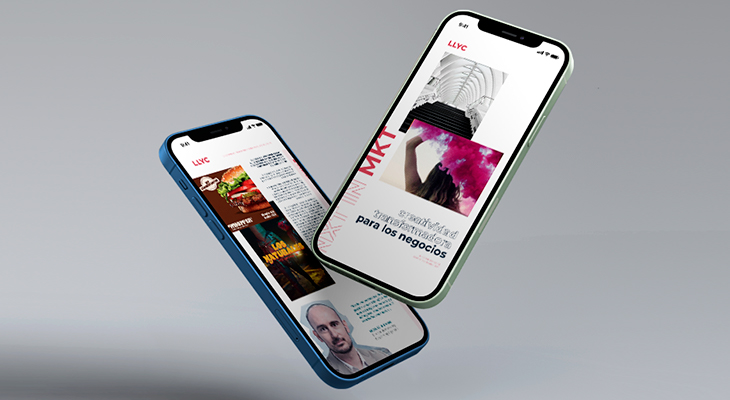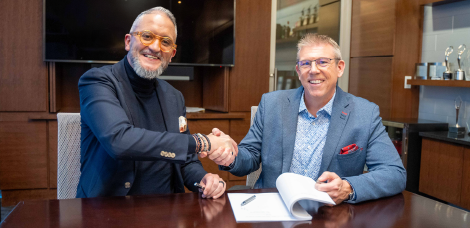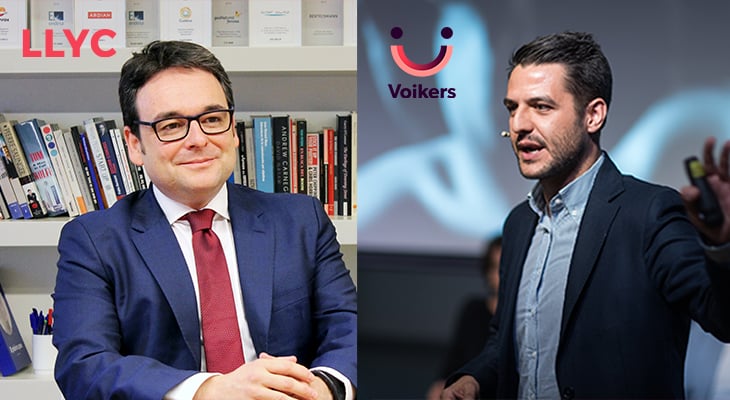Creativity has clearly enhanced its role over the last year. Its importance has particularly grown in the disciplines of digital communication and influence marketing, and it has a high impact on the income model and in business processes. Teamwork, diversity and training and research are key to boosting creativity, while its worst enemies are pressure for short-term results and the fear of risk. These are some of the conclusions to come out of the report Transforming creativity for businesses, drawn up by LLYC. The study has gathered the experiences and opinions of more than 100 heads of marketing at leading companies in 12 markets in Europe and Latam on the evaluation of the role of creativity as a driver of business success.
Coca-Cola, Heineken, Apple, Amazon, Natura, Red Bull, Nike, Netflix, Google, Burger King and McDonald’s are some of the most cited brands by professionals in terms of the admiration they feel toward their creativity.
David González Natal, Partner and Senior Engagement Director at LLYC says, “As the report shows, the importance of creativity for CMOs continues to rise and it is increasingly becoming a key tool for success in all types of businesses. The contribution of creativity in marketing is becoming less associated with just advertising and more with each facet of the discipline, while being an essential component for the efficacy of strategies”.
“Creativity is something intrinsic in people that allows us to tackle problems and find new solutions to problems and hurdles we face in our daily lives. This report is the result of fieldwork with the heads of leading marketing departments that have taken on-board the importance of creativity in their businesses and given rise to some of the best and most differential experiences. Experiences that have translated into income, recognition and business”, explains Guillermo Lecumberri, Consumer Engagement Director in Madrid.
Impact of creativity by discipline and by field
For most of the experts consulted (90%), the importance of creativity has clearly increased in the field of marketing over the last year, a change contributed to by the pandemic, digitalization and an overload of information. Its importance has also grown in the disciplines of digital communication and influence marketing, followed by brand communication and image, and advertising. This change has been felt less in the commercial and sales areas, and in promotion.
In terms of the level of impact in the different departments of a company, most of those surveyed consider that creativity has a great impact on both the business model and on the processes necessary to develop them. They also consider that creativity has a high impact on product performance, on brand communication and on interaction with the client.
What are we facing? Obstacles to creativity
The lack of team motivation may be a major stumbling-block, but in the course of daily affairs there are also other hurdles that prevent the creative development that is innate in human beings. According to the results of the survey, pressure to achieve short-term results is the greatest hurdle facing creativity on a daily basis (75.8% of the votes). This is closely followed by the fear of risk (74.7%). A lack of time (54%), a lack of resources (29.8%) and a lack of confidence (27.5%) are also habitual impediments to achieving inspiration. Lastly, a lack of authenticity also affects this (11.4%).
So, not pursuing immediate results, trusting in risky gambles and in one’s own capacity to work well, dedicating the necessary time and resources and being authentic are the steps to take to achieve this creative environment that impregnates business.
And how do we achieve this? Creativity as a skill
Having reached this point, the inevitable question would be, “I want a creative organization but how do I achieve that?” This study also responds to that challenge. Among the work methodologies and techniques employed at the more than 100 companies surveyed to boost team creativity, ‘brainstorming’ and ‘brainwriting’ particularly stand out, with close to 80% of the votes. These are followed by techniques to generate group ideas, with close to 70%, and ‘design thinking’ techniques, with more than 67%. Among other additional techniques, the ‘agile’ method was also repeated among those surveyed. The marketing managers surveyed believe that the most common techniques that will be used in the future will be design thinking (73%), followed by brainstorming and brainwriting (68%) and techniques to generate ideas within the group (53%).
What values will foster this?
There is also a series of values or aspects that unquestionably help foster the creativity of the members of organizations according to those surveyed, who feel that diversity (80%), teamwork (75%) and training and research (43%) are essential. They also value such other aspects as forgetting hierarchies (40.5%), rewarding creativity (39.3%), breaking with routine (38.2%) and being listened to by leaders (36%).
Who should I work with to foster creativity? The perfect partner
67% of marketing professionals consider that the agencies specialized in creativity are the partners that have gained the most importance as brand allies in recent times, followed by media and PR agencies (both with a little over 40%) and individuals and freelance teams (36.7%). Some of those surveyed also mentioned ‘influencers’, digital marketing and technology partners here, such as Google, Facebook and Salesforce. According to 83% of those surveyed, the aspect where the creative contribution of external agencies and partners is most important is digital communication and influence marketing, followed by brand communication and image (72.7%), advertising (66%), public relations (47.7%) and market research (44,3%).



